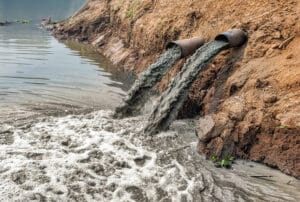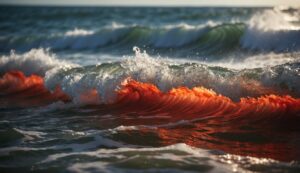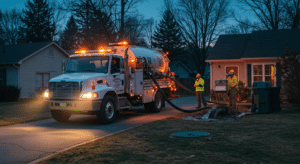In and around Suffolk County, there are several types of algal blooms that affect marine life and harm the natural beauty of our waterways. Brown tides are one of them.
While researchers are still studying potential causes of this type of bloom, what we do know is how harmful it can be to marine ecosystems.
What is a Brown Tide?
A brown tide is a microalgal bloom that turns waterways a brown color. Brown tides, which are caused by the exceptionally small species Aureococcus anophagefferens, have a direct negative effect on eelgrass beds and shellfish, including bay scallops.
Brown tides have been spotted along South Shore and Peconic estuaries in Long Island as well as bays in Delaware, Maryland, New Jersey, Rhode Island and South Africa.
In Suffolk County specifically, the first brown tide was spotted in 1985. Over the years, it has reappeared in a variety of locations and intensities.
More recently, brown tides have been seen in Moriches Bay, Quantuck Bay, western parts of Shinnecock Bay and Great South Bay.
What are the Impacts of Brown Tides?
At high concentrations, brown tide blooms turn waterways brown and reduce visibility to less than 2 feet.
Brown tides harm the aesthetics of waterways, but they also reduce light penetration.
Lack of sunlight harms eelgrass beds, which play an important role in marine ecosystems. In addition to being a source of food, eelgrass also serves as spawning and nursery grounds for fish.
Brown tides can also have economic impacts. For example, the scallop industry in Peconic Bay was once a thriving industry that brought in more than $2 million annually. Unfortunately, brown tides nearly eradicated the industry and it is only recently returning through extensive seeding and restoration efforts.
The effects of brown tides also impact other shellfish, including oysters, clams and mussels. In addition, Finfish landings have declined because the fish tend to avoid bloom areas.
What Causes Harmful Algal Blooms?
Although researchers know more about Aureococcus anophagefferens, they still aren’t sure what factors will trigger a brown tide.
Potential factors that may contribute to brown tides include:
- The weather and climate. Reduced flushing can increase the retention of nutrients that trigger brown tide bloom growth.
- Chelators, including trace metals and citric acid.
- Warm water and high salinity.
- Lack of feeding clams and microzooplankton to keep blooms in check
The brown tide organisms can also consume organic compounds in the water, so they can still multiply even in low light conditions.
What Can Be Done About Brown Tides?
Like other harmful algal blooms, brown tides can have significant impacts on waterways and marine life. While there are many potential causes of brown tides, high levels of nitrates contribute to algal blooms in general.
Many homes in Suffolk County rely on outdated septic systems and cesspools for wastewater treatment. These systems leach nitrates that make their way into coastal waterways and contribute to harmful algal blooms like brown tides.
If you live in Suffolk County, replacing your old and outdated septic system with an I/A OWTS system (innovative and alternative on-site wastewater treatment system) can help restore our water resources.
Suffolk County, the State of New York, and local governments all currently offer septic upgrade programs that provide rebates for replacing old septic systems with new, nitrogen-reducing systems.
With incentives exceeding $40,000 in some areas, it’s possible to cover the entire cost of your system upgrade.
If you’d like to learn more about how you can help by switching to a nitrogen reducing septic system, please click here to schedule a free, no obligation consultation with one of our specialists.









